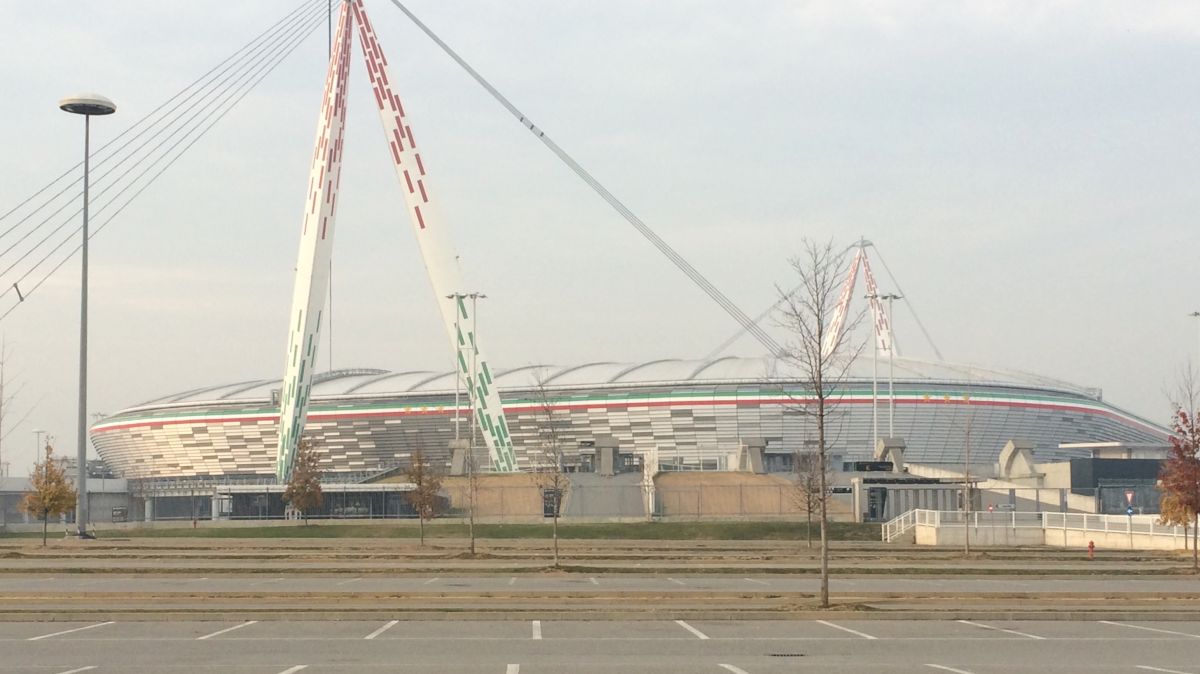Juventus, Frosinone, & Sassuolo Lead Serie A Stadium Revolution
Juventus, Frosinone, & Sassuolo Lead Serie A Stadium Revolution
A few stadiums in Serie A are in near disrepair — just ask Napoli — but teams like Juventus and Frosinone are on the front lines of top-quality facilities.

In the 1989 film “Field of Dreams,” Iowa corn farmer Ray Kinsella is compelled to build a baseball stadium on his land by a voice telling him, "If you build it, he will come." After he does, “Shoeless” Joe Jackson and other dead players emerge from the cornfields to play a game in front of a large crowd, the ticket sales saving the day for the cash-strapped farmer played by Kevin Costner. The plot is far deeper and more sentimental than that, but the message urging the farmer to get to work is one that many club owners in Serie A would do well to heed.
Given that he has called the Bernabeu and Old Trafford home, Cristiano Ronaldo could’ve been forgiven for wondering if he’d arrived at the wrong place last month, the sight of the Stadio Carlo Castellani unlike almost anywhere he has been in action before.
Indeed, Empoli’s stadium is jarring to see in person. Opened in 1965 with just one main stand, promotion to Serie B in the 1980s saw expansion begin with temporary stands erected around the running track. One of these was replaced by a permanent structure in 1990, but at each end those makeshift seats remain in place, rusting and creaking as supporters climb the metal steps every Sunday.
However, while Ronaldo might have wondered where on earth he was playing, at least Empoli have a plan. A well-run club, they are set to begin work to rebuild the Castellani as a 20,000 venue without a running track, putting their supporters closer to the pitch and modernizing the stadium just as many of their rivals have done.
Atalanta have taken ownership of the Stadio Atleti Azzurri d’Italia from the local council and have begun work on renovating it in a similar manner to the complete transformation of Udinese’s Dacia Arena. Formerly the Stadio Fruili, all four sides were demolished and rebuilt, the result seeing the club now play in a thoroughly modern venue that allows them to maximize profits while providing a vastly improved match day experience for their supporters.
The same is true at Frosinone who, despite being a minor club enjoying only their second ever season in Serie A, have invested heavily in their new Stadio Benito Stirpe. Named after a former owner of the team by the current president – his son Maurizio – the stadium has a capacity of 16,000 and shows smaller sides just what is possible.
Perhaps the only thing better than the huge financial outlay he has made is the belief that it doesn’t belong to him.
“The stadium was designed to leave something to the local area,” Maurizio Stirpe told Tifo Football recently. “It was made for the supporters, who are then the real owners of this ground. We are merely the temporary administrators of it, the fans remain forever.”
As if increasing revenue and improving games for the current generation were not enough, the idea that a new stadium can be a legacy for the future is one Italian football needs to grasp. Sassuolo and Juventus led the way, but the rest continue to play in outdated and dilapidated venues that are simply not even close to the required standard.
Back in 2015, Genoa finished sixth but were not allowed to take part in the Europa League because of the state of their stadium. Ironically, cross-town rivals Sampdoria – who share the same Stadio Luigi Ferraris – had agreed to play UEFA fixtures at Torino’s Stadio Olimpico and took their place. Three years later, the arena remains unchanged and unfit for purpose, just as those in Bologna, Naples, and Rome are, very little being done to move forwards and towards workable solutions for the future.
They must surely see the difference it makes, with the fact that some of the sides in the bottom half of the table doing what the likes of Napoli, Lazio, and Sampdoria so desperately need only serving to highlight the ludicrous nature of remaining idle.
Serie A now needs its bigger teams, its better teams, to follow the trail blazed by the division’s minnows and build modern stadiums as soon as possible. Doing so will not only enhance their own bottom line, but will improve the perception of the league around the world and entice more fans to go to games or tune in on television.
“If you build it, they will come…”
Adam Digby is an Italian football writer for FourFourTwo, The Independent, and elsewhere. Author of "Juventus: A History In Black & White." Follow Adam on Twitter.